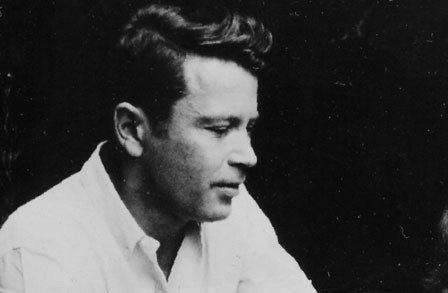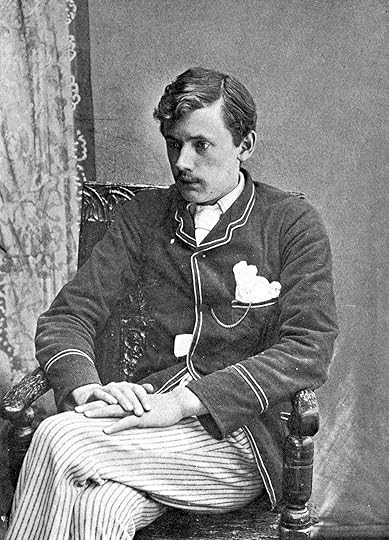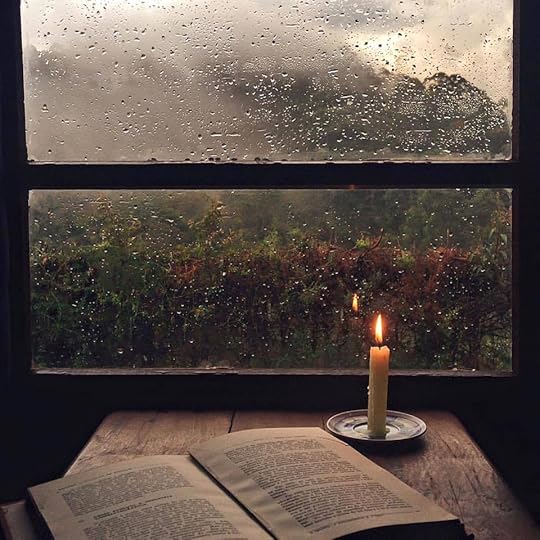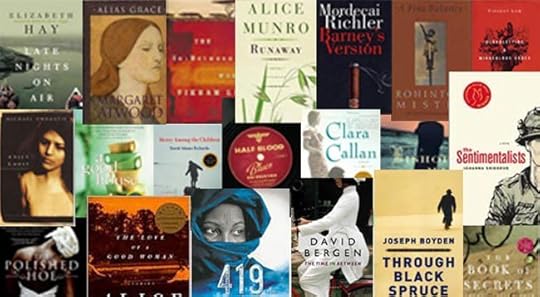Richard Harris's Blog, page 16
October 17, 2017
“A Baroque Wall-Fountain in the Villa Sciarra”

Something about the title of this poem just makes me think of The English Patient, as a troubled yet humane Hana helps carry the man known as the EP up from the train and towards the bomb-damaged Villa San Girolamo.
But this post isn’t about Michael Ondaatje. It’s about another glowing star in the sky of wordsmiths and lyricists, Richard Wilbur. As Daniel Lewis reported in The New York Times – “Richard Wilbur, Poet Laureate and Pulitzer Winner, Dies at 96” – Mr. Wilbur died Saturday.
Per the NYT article:
“[Wilbur] received his first Pulitzer in 1957, and a National Book Award as well, for “Things of This World.” The collection included “A Baroque Wall-Fountain in the Villa Sciarra,” which the poet and critic Randall Jarrell called “one of the most marvelously beautiful, one of the most nearly perfect poems any American has written.”
So, without further ado, here’s the poem in its entirety:
Under the bronze crown
Too big for the head of the stone cherub whose feet
A serpent has begun to eat,
Sweet water brims a cockle and braids down
Past spattered mosses, breaks
On the tipped edge of a second shell, and fills
The massive third below. It spills
In threads then from the scalloped rim, and makes
A scrim or summery tent
For a faun-ménage and their familiar goose.
Happy in all that ragged, loose
Collapse of water, its effortless descent
And flatteries of spray,
The stocky god upholds the shell with ease,
Watching, about his shaggy knees,
The goatish innocence of his babes at play;
His fauness all the while
Leans forward, slightly, into a clambering mesh
Of water-lights, her sparkling flesh
In a saecular ecstasy, her blinded smile
Bent on the sand floor
Of the trefoil pool, where ripple-shadows come
And go in swift reticulum,
More addling to the eye than wine, and more
Interminable to thought
Than pleasure’s calculus. Yet since this all
Is pleasure, flash, and waterfall,
Must it not be too simple? Are we not
More intricately expressed
In the plain fountains that Maderna set
Before St. Peter’s—the main jet
Struggling aloft until it seems at rest
In the act of rising, until
The very wish of water is reversed,
That heaviness borne up to burst
In a clear, high, cavorting head, to fill
With blaze, and then in gauze
Delays, in a gnatlike shimmering, in a fine
Illumined version of itself, decline,
And patter on the stones its own applause?
If that is what men are
Or should be, if those water-saints display
The pattern of our aretê,
What of these showered fauns in their bizarre,
Spangled, and plunging house?
They are at rest in fulness of desire
For what is given, they do not tire
Of the smart of the sun, the pleasant water-douse
And riddled pool below,
Reproving our disgust and our ennui
With humble insatiety.
Francis, perhaps, who lay in sister snow
Before the wealthy gate
Freezing and praising, might have seen in this
No trifle, but a shade of bliss—
That land of tolerable flowers, that state
As near and far as grass
Where eyes become the sunlight, and the hand
Is worthy of water: the dreamt land
Toward which all hungers leap, all pleasures pass.


Branding for Editors in T.O.

FYI, for more FYI from @EditorsToronto, click here.
What makes for good branding in the world of freelance editing, and how does it come about? How can editors communicate their brand to attract clients who will be a good fit for their skills, goals, and experience?
Join us on Tuesday, October 24, for a panel discussion and workshop geared to helping freelance editors hone the messages they use to communicate with prospective clients. Freelance writer and editor Marnie Lamb of Ewe Editorial Services will speak about how she developed her brand organically; entrepreneurial consultant Donovan Dill will speak about branding as the bedrock of any business; and freelance magazine editor/incubator Carolyn Camilleri will lead a mini-workshop to help editors define and refine their brand to attract the right clients.
When: Tuesday, October 24, 7 PM
Where: Centre for Social Innovation (CSI), 215 Spadina Ave., Toronto, Alterna Savings room, fourth floor
IMPORTANT: The CSI building closes at 6 PM. If there is no Editors Toronto greeter at the front door when you arrive, please enter through the Dark Horse Espresso Bar (attached to the CSI, on Spadina, open until 8 PM), and take the elevator up to the fourth floor. If the Dark Horse café is closed when you arrive, please text Lee, programs chair, at 647-607-0416, and we will send someone to open the door.


Design in the Age of Anxiety

“Nothing distorts intent like anxiety. Anxiety pulls focus from the goal and lets energy flow towards distractions and perceived threats. Anxiety flourishes in the absence of information.”
Erika Hall, co-founder of Mule Design, has written an interesting piece on design, our anxieties, and the future titled “Design in the Age of Anxiety: To create a better future, understand the now.“
I should point out that it’s interesting to me because I work in the field of design almost every day, specifically from the linguistic end, but the truth is that design is all around us in so many different forms (the font you’re currently reading this in, the shape of the device you’re reading it from, the colour palette of the walls/street/buildings surrounding you, and on it and on it goes).
“Design is exciting because it is the practice of shaping the future. Research requires the discipline of taking an honest look at the past and present. The present is a mess. It always is. But the present is the soil in which we grow our potential futures. Those who strive for innovation without inquiry will have trouble getting their ideas to thrive in the real world.”
Among Ms. Hall’s many other witty quips and observations, some of them included but were not limited to:
“The future spreads like cold butter.”
“Innovation takes hold when a new idea fits into existing habits like a key into a lock.”
“With the right information, delivered with care, anxiety dissipates.”
“Innovation without inquiry leads to trouble in the real world.”
And from her website:
“We don’t trust people who want to like us. They tell you what you want to hear. They choose friendship over criticism. And they don’t make your work better. To us, a compliment doesn’t count unless it’s given begrudgingly by someone who’d rather kick our asses.”


October 16, 2017
Quote of the Day

AUTUMNAL
Pale amber sunlight falls across
The reddening October trees,
That hardly sway before a breeze
As soft as summer: summer’s loss
Seems little, dear! on days like these.
Let misty autumn be our part!
The twilight of the year is sweet:
Where shadow and the darkness meet
Our love, a twilight of the heart
Eludes a little time’s deceit.
Are we not better and at home
In dreamful Autumn, we who deem
No harvest joy is worth a dream?
A little while and night shall come,
A little while, then, let us dream.
Beyond the pearled horizons lie
Winter and night: awaiting these
We garner this poor hour of ease,
Until love turn from us and die
Beneath the drear November trees.”
― Ernest Dowson,
The Poems and Prose of Ernest Dowson
Today, in honour of the first real autumn day here in Toronto, I thought it appropriate to make the QOTD something poetic and fall-like. Therefore, I chose a poem called “Autumnal.” It just made sense.
Ernest Dowson was a talented writer in all genres: fiction, short stories and poetry. He was also a dreamer, a romantic, and prone to bouts of blue and gloomy sadness. Considered part of the Deacadent movement, “a late 19th-century artistic and literary movement, centered in Western Europe, that followed an aesthetic ideology of excess and artificiality,” Dowson now holds the record for youngest author to drink himself to death according to my research, accomplishing this “feat” by age 32 after shit completely fell apart in his life and everyone around him seemed to be dying.
But let us not focus on the negative. Sometimes the light that burns twice as bright burns half as long, as appears to be the case with young Mr. Dowson. In those years he did bequeath us pages and pages of literary nuggets, perhaps it’s best to remember him for the words that still resonate with us, the living, as autumn descends upon us in the Northern Hemisphere, and trees shed their spring/summer garments on their short-lived journey to becoming naked orphans once again.


Trench 11: A Must-See WW I Story

First off, congratulations to Producer Tyler Levine, Director Leo Scherman, and the entire crew from Carousel Pictures for an unbelievable job on Trench 11, a film noir-esque movie about the final days of World War I, when “a shell-shocked soldier must lead a mission deep beneath the trenches to stop a German plot that could turn the tide of the war.”
Last night’s Canadian premiere, after stints at the Berlin Film Festival and a showing at Hollywood Boulevard’s legendary Grauman’s Chinese Theater last week, was amazingness on a scale worthy of TIFF in September.
Second, I love war films, and this one has now entered my pantheon of must-sees, notably about a war that will receive less and less attention now that all the vets are officially dead from what people once called “the War to End All Wars.” Trench 11 has the claustrophobic cinematography of Cube (1997) mixed in with the wartime multinational, ragtag team feel of Purple Sunset (2001), but shot in a gritty, in-your-face style.
Third, did a fantastic job as our unsung Canadian hero with the beautiful French woman () to make it out alive for when the sauerkraut really hits the trench fans. That one quasi-still frame of Vanesse towards the end was the moneyshot for Sherman, who evoked memories of Ridley Scott pulling at heartstrings with a similar technique in Gladiator.
Fourth, interesting things I learned from the movie: Winnipeg is more romantic than Paris; German food sucks; Brits will drink tea on the battlefield even when in the thick of it; death by tapeworm infestation looks painful, especially when they pop out through your eyes.
Finally, many thanks to Katelyn Cursio for arranging the tickets in advance, Carousel Pix for throwing cool pre-/post-parties, the Toronto After Dark Film Festival (@TADFilmFest), and Scotiabank Theatre Toronto.


October 15, 2017
CanLit & Toronto’s 2017 IFOA
Mike Doherty published a piece in The Toronto Star yesterday called “CanLit at a crossroads: Four writers on the state of our country’s literature,” and Steve Paikin (@spaikin) held a roundtable on The Agenda (@TheAgenda) titled “Whose CanLit is it Anyway?” They are, respectively, a good read and viewing.
And don’t forget about the upcoming International Festival of Authors (IFOA – @ifoa), which runs from October 19 to 29.
Per the Star article:
The Glorious and Free? Canada in 2017 panel runs on Friday, Oct. 20 at 8:00 pm; Canisia Lubrin appears three times, including hosting the Dissecting the Villain panel on Sunday, Oct. 27 at 1 p.m.; Lee Maracle is appearing in a number of events including In Conversation With Lee Maracle on Thursday Oct. 26 at 6:00 pm; and Eden Robinson appears in the panel “In Search of Ithaca” on October 25 at 6:00 p.m. The International Festival of Authors runs from October 19 to October 29 at Harbourfront Centre in Toronto. For more information and to buy tickets go to www.ifoa.org .


Lee Child: Brain, Meet Candy
In between sweeping fictional epics and treatises on a broad range of subjects, from the origin of modern phytoplankton to explaining theories of economic growth, I like to get my inner Child on. Lee, that is.
As I await my Amazon order due next week (Manhattan Beach, Don Quixote), I have a few days to let my mind wander, so I let it wander all the way to the local library yesterday, where I picked up Make Me, Lee Child’s 8 millionth addition to the Jack Reacher Library for Altruism, Public Safety & Community Affairs.
And for reasons that escape me, I can’t get enough of JR/Lee Child. Or, as Murakami Haruki is super-enthusiastically quoted as saying on Mr. Child’s website, “I like Lee Child!” Good on ya, Haruks! Talk about a ringing endorsement. Maybe someone should have looked at “The Language of Love” before translating that one.
I tried explaining the appeal of Lee Child to my mother last night, but fear I didn’t do a very good job.
“So I’m about 120 pages in,” I began, “and essentially nothing’s happened so far. JR’s in the middle of nowhere Oklahoma, there’s been one minor fight, no deaths, one gun scene, a complete lack of blood, and a mystery tied to the evolution of wheat.”
“Weak?” she asked.
“Nope. Wheat”
“Like a Tweet?”
“Similar, but totally opposite. Like shredded wheat, yet not yet shredded yet. Anyway, Lee Child’s greatest description thus far into the book is of a train station and a mahogany bench. In a town called Mother’s Rest.”
“Who?”
“Not who. Where.”
“What?”
“Anywho, I’m not kidding about the slowness of it. Best of all, if you asked Matt to edit this as a manuscript, he’d have a heart attack and lose much of his head hairs; there’s alliteration all around, poor man’s poorly punctuation, dialogue bleeding from one character to the next (how many people really say ‘a million to one gets you…’ so often?), and so on and so forth.”
“So why do you like him so much?” my mom asked, equally fascinated and repulsed by my answer.
“I dunno, but I do!”


Things Fall Apart
Entropy. There. I said. Are you happy? I called out the entropy in the room.
As everyone knows, entropy is a thermodynamic quantity that changes in a reversible process by an amount equal to the heat absorbed or emitted divided by the thermodynamic temperature.
Or, according to Daniel Dávila, entropy can be seen as “the universe’s pesky proclivity for disorder, ensur[ing] that things fall apart.”
Going to bat for her husband, April Dávila wrote a guest post for Daniel about said husband’s blog, specifically about one of his earliest posts, “If we’re all entropy’s bitches, why bother?” That is a fair and good question, Mr. Dávila.
The premise behind the answer is the following: “Story may not be the only way to deal with the ultimate demise of everything, but it’s one of the best. We can’t stop time, but, with story, we can find our place in it.”
I encourage you to read the entire piece about Entropy’s Bitches (this should be a band name), as Mr. Dávila does an interesting job of eventually getting to why storytelling – but really he means writing – is the greatest, most important, without equal among the arts & sciences, humane to the point of being human, job/responsibility in the world.
Which got me thinking about a book I read years ago for my book club called Sex at Dawn: The Prehistoric Origins of Modern Sexuality. While performing extensive research upon completing this theory on the evolution of monogamy in humans and human mating systems (get your mind out of the gutter), I came across a fascinating anthropological piece that examined the most important things necessary for human survival.
Not surprisingly, food and water are most critical for our survival. According to one site, we can go about three or four days without water, and about three weeks without food. But this is where the study got interesting. What’s the next most important element for human survival? they asked. Many people might say shelter, and while it’s always nice to have a roof over your head, these anthropologists argued that it was storytelling which came next.
There will never be a way to prove this one way or the other, but deep down I think they’re right. Mankind survived on the savanna for millennia upon millennia without much of anything. And while the invention of weapons backs up the above theory (we need food!), the invention of language, first spoken and then written, lends credence to the “Storytelling Is No. 3” theory.
The why? of this is precisely that which Daniel Dávila gets to in his post, and concludes with a big bang, writing:
“So, the next time you are face to face with the blank page, ask yourself this: What part of my mind, common across culture and history, will help the reader understand her place in impermanence? Or, to put it another way: What experience can I relate that illustrates to the other monkeys that my tree, for now at least, is a safe place to wait out the long night ahead?”


October 14, 2017
My Creativity Sucks (When the Weather Is Suckier)

Anger bottled up inside. Should I have tagaltiniorni for lunch? And maybe an acrylic-pour, colourful abstract original artwork painting on canvas in fluid art red, green and white for a friend’s next birthday present?
The weather sucks big cojones today here in whatever it’s fashionable these days to call Toronto. It’s cold and dark and pissing (not raining), so this got me thinking: Does weather affect one’s creativity? Aside from making it easier to procrastinate (like blog) or alleviate stress (smoking), apparently I am also prone to recognize metaphors, think of new pasta names, and come up with abstract gift ideas more seamlessly in weather like this.
There are a lot of sites out there that address if/how crapstain weather affects your creativity, but I wanted some science behind it, which is how I tracked down Laura Geggel (@LauraGeggel) and her piece in Live Science titled “Five Weird Ways Cold Weather Affects Your Psyche.”
Ms. Geggel goes into more depth than merely exploring creativity, but here’s a brief summary of said subject:
Different types of creativity can emerge when a person feels hot or cold, researchers found.
In a series of experiments, researchers found that people who were given a heated therapeutic pad, a hot cup of tea or who were in a warm room were better at creative drawing, categorizing objects and thinking of gift ideas for others.
But when they were cold, the participants were better at recognizing metaphors, thinking of new pasta names and planning abstract gift ideas.
It’s possible that warmth helps people with warm relational creativity, meaning they may feel psychologically closer to other people and more generous toward them. In contrast, cold may stimulate referential, or distant and cold processing, as people may feel more apart from others.
“The tactile experience of physical warmth seems to be one of the most basic cues through which people learn about their social world,” the researchers wrote in the 2014 study, published in the journal Acta Psychologica.
All I know is that if the weather doesn’t get better today, I may be back here sooner rather than later, and posting yet another update…


October 13, 2017
Quote of the Day

“Laughter is unfound prayer and the only time a person is completely unguarded.”
— Erin Harris
That’s me momz! Famous? Check. Gifted writer? You bet. Awesomeness factor? Off the charts.
This a real quote because (a) she said it, and (b) the time she did say these words – many, many moons ago, when tigers smoked – I actually wrote them down.
Today, when not coming up with magic like above, she gives of her time at the Older Women’s Network (OWN), a volunteer organization that has, among other things over the years:
• worked for the expansion of opportunities for older women in the work force
• pressed governments for economic security for older women, many of whom were left penniless after divorce
• advocated for affordable housing
• supported government initiatives to develop long-term care and aging-at-home projects
• combated ageism and sexism in the media and in government programs
• continued the process of consciousness-raising through the study of feminist literature and its application to the lives of women








